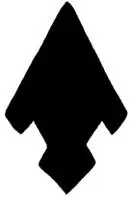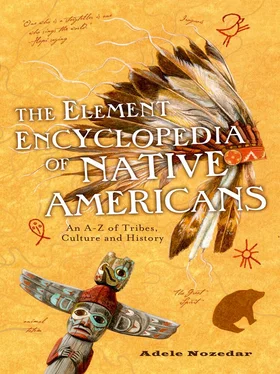His distinctive nickname—which became synonymous with the idea of the Wild West—was actually won by him in a shooting match with another Bill, Bill Comstock. Both were buffalohunters and killers. Cody won the name after shooting 69 buffalo, 19 more than Comstock, in a timed shoot-out.
Cody had secured a contract to supply buffalo meat to the men working on the Kansas Pacific Railroad. Evidently a prolific hunter, Cody killed over 4,000 buffalo in an 18-month period between 1867 and late 1868, and no doubt was among those who made a significant contribution to the almost-extinct status that the species subsequently suffered. In later life, understanding what was happening, Cody would campaign for a restricted huntingseason.
Bill had a wide-ranging resumé. During his life, he claimed, he had been a soldier, a scout, a Pony Express rider, a trapper, a stagecoach driver, a wagon master, and the manager of a hotel. He was also a distinguished Freemason. He won the Medal of Honor, awarded for gallantry in action.
However, it was his Wild West shows that really made him famous, not only in the U.S. but throughout Europe.
“Buffalo Bill’s Wild West Show” was conceived after Cody had spent ten years as an actor in a traveling show entitled “Scouts of the Plains,” in which episodes from the lives of the settlers and the Natives were portrayed. Founded in 1883, Cody’s show changed its title ten years later to “Buffalo Bill’s Wild West and Congress of Rough Riders of the World.” From all accounts, this must have been a spectacularly staged event, a circuslike entertainment that included among its participants members of the U.S. Military, many, many horses, displays of sharp-shooting using real guns, and also real live Native Americans, dressed in full attire. Sitting Bulland Crazy Horsewere among those who took part.
The show traveled all over the U.S. and overseas in Europe (where it toured eight times), including Great Britain. The show played to Queen Victoria in 1887, the year of her Jubilee marking 50 years on the throne. In 1890 Buffalo Bill had an audience with Pope Leo XIII.
Buffalo Bill, who had been a scout, had a huge amount of respect for the Native Americans and their plight. He believed that his show paid the Native American participants a good wage. When the show traveled, the Native American contingent would pitch their camps along the route and at each stopping-place where the show was going to be held. This not only added to the spectacle but showed the audiences a little of the Native American way of life.
Buffalo Bill died peacefully in 1917 of kidney failure, surrounded by his family and friends.
The rare instance of an albino buffalo was seen as a favorable sign from the gods, and the animal was held in great reverence. A magical animal that was accorded the power of shape-shifting, and could even apparently transform itself into a beautiful woman, the sacred status of this rare natural phenomenon meant that the white buffalo became the subject of many myths and stories. The hide of the animal, once it had died a natural death, was made as an offering to the gods.
A piece of wood, carved and polished into a flat oval shape. The ends were pierced to allow thread to be passed through. The size of the wooden part of the instrument could be anywhere from 4 inches to 6 feet long.
When the bull roarer was spun around the head, it emitted a loud roaring sound that was thought to emulate the sound made by the Thunderbird. It was used as a magical instrument, the sound of which was believed to call rain from the skies.
It’s still possible to buy souvenir versions of the bull roarer.

A circular boat, something like a coracle, used for short trips across (inland) water. The bullboat was made of rawhides stretched over a willow framework. The seams of the hide were made waterproof with rendered animal fat, and ashes from wood fires. It was used by the Mandantribes—who, it was conjectured, were descended from the Welsh; its similarity to the coracle, used in Wales, lends a certain credence to this theory.
This organization officially started as part of the U.S. Department of the Interior in 1849, but was first founded in 1824 when it was called the Office of Indian Affairs, a part of the War Department. It was given its current name in 1947.
Across the many tribes of Native American Indians, there were many different approaches to the disposal of the remains of a lost loved one. But it’s safe to say that the two main differences were whether the corpse was buried in the ground or left in the open air.
The latter was the preferred way among the Arapaho, Chippewah, Gros Ventre, Mandan, Siksika, and Siouxtribes. All these peoples placed the corpse either in the branches of a tree, or at the top of a framework that was specially constructed for the purpose. In northwestern America the body was put into a boat or canoe, the entire canoe then suspended in a tree.
The underground burial, though, was really the most widely used method. The corpse might be wrapped in matting made of cane, and buried in the ground. Some tribes embalmed the body prior to burial. Seminoleand CreekIndians dug circular holes into which the corpse was inserted in a sitting position, whilst the Mohawkused the same method except the corpse would be squatting.
The buried bones of the tribes belonging to the Great Lakes region would be disinterred periodically and placed in a common pit.
Lots of tribes placed items near the burial place, such as weapons. The belief was that these worldly goods would be needed in the world that was to come. And sometimes the horseof the dead person was slain with him, so that the two might go into the afterlife together.
All tribes mourned their dead, but again, the methods of displaying that grief varied. Cutting the hair off, slashing the body or arms with blades, wailing and fasting; all these were ways of expressing grief to the rest of society. Among some tribes, if a person died in a tipi, then the tipi would be sealed up, marked as unlucky.
The Comanche, expert horsemen, placed the corpse on the back of a horse along with a (living) rider. The rider would then go in search of a suitable burial place, such as a cave. Once the body had been buried, stones were piled up to mark the spot.
If a member of the Creek tribe died while in bed, the corpse was buried underneath that bed.
Several prominent Native Americans, including Sitting Bulland Black Hawk, have been disinterred and moved to other places.
When we “bury the hatchet,” we let go of irritations we might have with a neighbor or adversary in favor of peace.
The saying has its origins in a small piece of ritual belonging to the Native Americans. When chiefs of tribes met to discuss a problem, as soon as a solution was settled, the pact was sealed, symbolically, by the literal burying of the hatchet, which was a weapon of war. There are records to prove this, too: for example, in the New England Historical and Genealogical Register of 1870 is an account, first written in 1680, from a gentleman named Samuel Sewall:
Читать дальше













